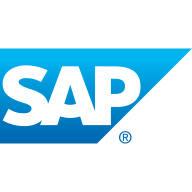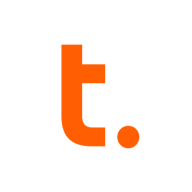


Find out what your peers are saying about Snowflake Computing, Oracle, Teradata and others in Data Warehouse.



SAP BW4HANA is a data warehouse solution developed by SAP for businesses looking to analyze big data in real time. It is designed to run on the SAP HANA database, offering improved performance and optimized processing of large data sets. SAP BW/4HANA provides an array of advanced analytics capabilities, including predictive analytics, text analytics, and spatial data processing. It also offers a modern, intuitive user interface and streamlined data modeling and administration tools, making it easier for businesses to access, manage, and utilize their data.
SAP BW4HANA Features
SAP BW4HANA has many valuable key features. Some of the most useful ones include:
SAP BW4HANA Benefits
There are many benefits to implementing SAP BW4HANA. Some of the biggest advantages the solution offers include:
Reviews from Real Users
SAP BW4HANA is a solution that stands out when compared to many of its competitors. Some of its major advantages are its hierarchical alert slicing, real-time insights, and its ability to transform large amounts of data.
PeerSpot reviewer, Srivatsav A., SAP BW/4HANA Specialist at a government, is very happy with the solution. He explains, "You can do hierarchical alert slicing and dicing out-of-box, which is not available in other solutions. I haven't come across that in Oracle or any other software provider."
“It has got wonderful features in terms of analyzing your production data, and it gives you real-time insight into productive maintenance. You can plan your budget, and you can map them against actuals. It gives you good insights on overall performance and processes,” says Amrit J., ERP Application Manager at an energy/utilities company.
In addition, a Technology Analyst at a tech services company mentions, "The most valuable feature is that we can transform a huge amount of data and apply business logic as per the requirements."
Snowflake is a cloud-based data warehousing solution for storing and processing data, generating reports and dashboards, and as a BI reporting source. It is used for optimizing costs and using financial data, as well as for migrating data from on-premises to the cloud. The solution is often used as a centralized data warehouse, combining data from multiple sources.
Snowflake has helped organizations improve query performance, store and process JSON and XML, consolidate multiple databases into one unified table, power company-wide dashboards, increase productivity, reduce processing time, and have easy maintenance with good technical support.
Its platform is made up of three components:
Snowflake has many valuable vital features. Some of the most useful ones include:
There are many benefits to implementing Snowflake. It helps optimize costs, reduce downtime, improve operational efficiency, and automate data replication for fast recovery, and it is built for high reliability and availability.
Below are quotes from interviews we conducted with users currently using the Snowflake solution:
Sreenivasan R., Director of Data Architecture and Engineering at Decision Minds, says, "Data sharing is a good feature. It is a majorly used feature. The elastic computing is another big feature. Separating computing and storage gives you flexibility. It doesn't require much DBA involvement because it doesn't need any performance tuning. We are not doing any performance tuning, and the entire burden of performance and SQL tuning is on Snowflake. Its usability is very good. I don't need to ramp up any user, and its onboarding is easier. You just onboard the user, and you are done with it. There are simple SQL and UI, and people are able to use this solution easily. Ease of use is a big thing in Snowflake."
A director of business operations at a logistics company mentions, "It requires no maintenance on our part. They handle all that. The speed is phenomenal. The pricing isn't really anything more than what you would be paying for a SQL server license or another tool to execute the same thing. We have zero maintenance on our side to do anything and the speed at which it performs queries and loads the data is amazing. It handles unstructured data extremely well, too. So, if the data is in a JSON array or an XML, it handles that super well."
A Solution Architect at a wholesaler/distributor comments, "The ability to share the data and the ability to scale up and down easily are the most valuable features. The concept of data sharing and data plumbing made it very easy to provide and share data. The ability to refresh your Dev or QA just by doing a clone is also valuable. It has the dynamic scale up and scale down feature. Development and deployment are much easier as compared to other platforms where you have to go through a lot of stuff. With a tool like DBT, you can do modeling and transformation within a single tool and deploy to Snowflake. It provides continuous deployment and continuous integration abilities. There is a separation of storage and compute, so you only get charged for your usage. You only pay for what you use. When we share the data downstream with business partners, we can specifically create compute for them, and we can charge back the business."
Teradata is a scalable data analytics platform designed to meet enterprise demands for large-scale data management and processing, focusing on performance, scalability, and security for complex query executions.
As a leading data warehousing solution, Teradata integrates advanced analytics enabling organizations to derive insights from massive datasets. It supports high-volume data workloads with its architecture optimized for analytical queries. Users benefit from its robust scalability, allowing seamless expansion as data grows. Teradata's SQL engine is compatible with a wide range of data types, ensuring flexibility in data analysis. With advanced security measures, it protects sensitive data across various environments, providing peace of mind to users handling critical information.
What are the most important features of Teradata?Teradata is widely used in industries like finance, telecommunications, and healthcare, where data-driven decisions are critical. Companies leverage its robust analytics capabilities to enhance customer experiences, streamline operations, and ensure compliance with regulatory requirements. In these sectors, quick access to data insights can significantly impact competitive advantage.